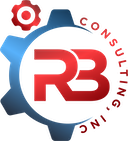Application Integration & Scraping
Modern Solutions Need To Communicate With Each Other
You can only do business with a customer if you communicate. In today’s world, that means your systems must speak the same language. Application integration and data scraping are powerful tools to make that happen, but they come with challenges that often require specialist skills. Think of it like a call center that must serve customers who speak different languages.
Manual integration methods, like printing reports and re-entering data, are time-consuming and prone to errors. With automation, you can eliminate these inefficiencies and reduce risks.
Integration Is Often Over-Simplified
Moving data from point A to point B is rarely as simple as it seems. A successful integration requires attention to data validation, formats, timing, and cleanliness. Overlooking these details can lead to costly failures at critical moments.
1. Define Goals
Understand the business problem, objectives, and the “why” behind the project.
2. Map Current Processes
Analyze workflows, requirements, and data sources to create a clear process diagram.
3. Design & Proof
Review integration methods, build proofs of concept, and identify extra requirements.
4. Validate Mapping
Test data mapping on paper and with a small dataset to confirm accuracy before scaling.
5. Execute & Monitor
Run the process with production-like data and monitor results for stability and accuracy.
Trust And Verify

Automation multiplies results—both good and bad. Automating a strong process can bring significant value quickly, but a flawed process will multiply errors. This is why flawless integration on the first try is rare.
Successful integration requires understanding the impact of the data, testing thoroughly, and especially being careful when working with unstable sources like scraped data. Continuous verification ensures your solution remains reliable.
